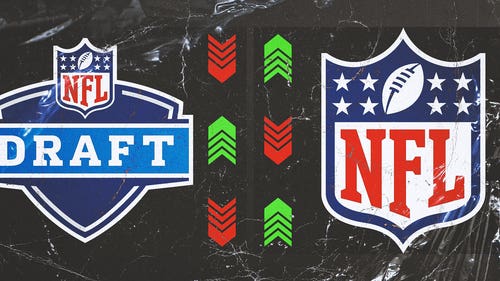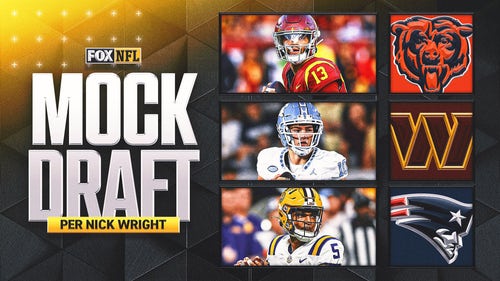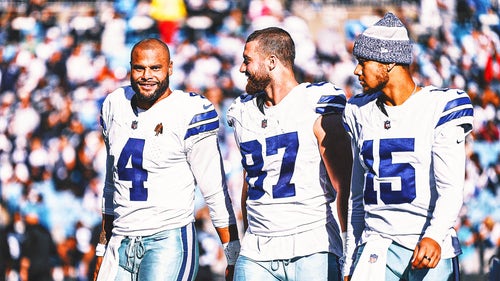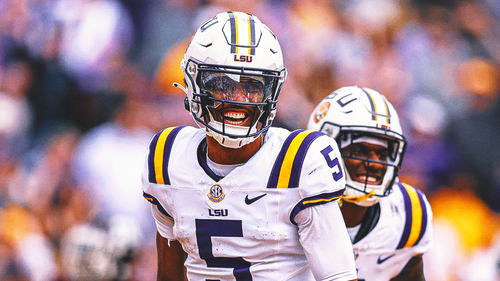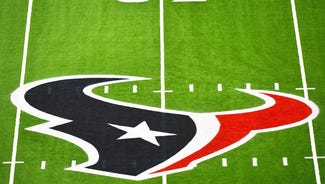
Seau embraced hometown, and vice versa
The teacher had known him since 1983, when Junior Seau showed up as a freshman in his physical education class at Oceanside High School. There was already something freakish about Seau’s desire to be a great football player. But his physical dimensions suggested something more modest.
“A skinny kid,” recalls the teacher, Ron Troxel. “Looked like a wide receiver.”
Still, the man Troxel recalls from their last encounter looked very much like the public conception of Junior Seau, which is to say, a Mr. America of Samoan descent.
Junior had been surfing. He wore trunks, no wetsuit and a big, broad grin as he came out of the water. This was the summer of 2010, not long after Junior Seau retired from football.
“Hey,” the teacher called out. “Why don’t you get a real job?”
Seau laughed. Troxel laughed. But looking back, he says, “I wish I had said something different.”
It occurs now, the day after Seau died of an apparently self-inflicted gunshot wound to the chest, that, contrary to an already formed opinion, it wasn’t football that killed him. It was not playing football.
Whatever is to be discovered about the state of his affairs or his nervous system, it’s clear that Junior Seau had an easier time being in the game than away from it. He survived 20 NFL seasons, but less than 2 1/2 years of retirement.
He was 43, most of his life spent within a few square miles in this working-class beach town. Troxel once asked him why he worked so hard — this was a kid, mind you, who’d be putting himself through drills before the coaches even got to practice.
“I want this community to be proud of me,” he said.
The Community. Giving Back to the Community. Typically, these rank among the most offending clichés in sports. Most of the time, “the community” is an amorphous, unspecified idea, a target of opportunity for public-relations types.
Not so with Junior Seau, though. Whatever is to be learned of him in the coming days and weeks, this much is sure: He knew exactly what, where and from whom he came.
He played the ukulele on his deck, facing that California surfer’s vision of paradise. Locals knew his home was theirs for a barbecue on July 4. He’d get a fade at All American Deluxe on Coast Highway, where barbers charge servicemen $6 for a haircut. Seau would leave a twenty. He’d get his breakfast burritos at Johnny Mañana’s on Mission. The only time he kept to himself was many years ago, when he used to come in with that hot blonde.
“He was for his people,” said Hortensia Manriquez, who left a candle (Sagrado Corazon de Maria, or Prayer to the Sacred Heart of Maria) at Seau's house, along with a homemade placard that read: “My prayers are with his family, specially his mom xoxo”
Manriquez, 59, makes $8.70 an hour as a security guard, but she feels of herself as she felt about the millionaire who’ll be immortalized with a bronze bust in Canton. She and Junior are of the same tribe, not necessarily Hispanic or Samoan, but of the neighborhood, of Oceanside.
She wasn’t alone, of course. A steady stream of pilgrims made their way to Seau’s home on The Strand. The tokens of their respect included jerseys and candles and handwritten cards:
I love you uncle JR.
I pumped your latte.
You gave all of us something to reach for Buddeee.
Say*Ow You inspired me as a child!
The flowers they left were still wrapped in supermarket cellophane, rubber bands tight around the thorned stems. Even with the television trucks, the tableau seemed a solemn one. You could hear the beat of the surf. The air smelled of salt and tar.
“I had to come,” said Manriquez. “I saw him on Sunday.”
Her pastor had suggested it. He was helping with a memorial service for a local mailman, Martel Miller. The mailman worked out at The Gym on Mission Street. So did his eulogist, Junior Seau.
“He was talking about life,” said Manriquez. “He said we could be sad, or we could be angry. But in the end, we got to be glad he’s not in pain.”
Seau was referring to the mailman. But in retrospect, Manriquez believes he was also speaking of himself.
It’s as good a theory as any. But it falls short as a reason.
Why did the smiling superman who came out of the ocean, a guy who ostensibly had everything, take his own life? And you wonder what the kids will say.
Shortly after 1 p.m. Thursday, just outside the athletic department office on the campus of Oceanside High School, a contingent of varsity football players celebrated Seau with an impromptu haka, a Samoan warriors’ dance.
“For you, Junior,” said a thickly built kid, thrusting a finger at the sky. “For you!”
It was an inspirational moment. But for teenagers — varsity football players, in particular — death remains an abstraction.
“Everyone’s trying to make sense of it, trying to come to grips with our own mortality,” said Dave Barrett, the school’s athletic director and baseball coach. “The logic behind it is . . .”
Barrett caught himself, a veteran teacher’s concession that there was no logic here. Barrett was an Oceanside freshman in 1966 and the football team’s defensive coordinator when Seau arrived 17 years later. He remembers the start of two-a-day workouts. He was the first coach on the field, about 7:15 a.m. But he wasn’t alone. The skinny freshman had already worked up quite a sweat, Seau timing his own shuttle runs with a stopwatch.
That was August 1983. Seau made good on that ferocious desire to be a football player. He made The Community proud. But now it only makes Barrett’s job tougher. Truth is, he doesn’t know what to say. But he gave the best he had.
“We care for you,” he told the kids. “We’re here for you.”
It was another way of telling them, “You don’t have to be Mr. America.”








































































































































